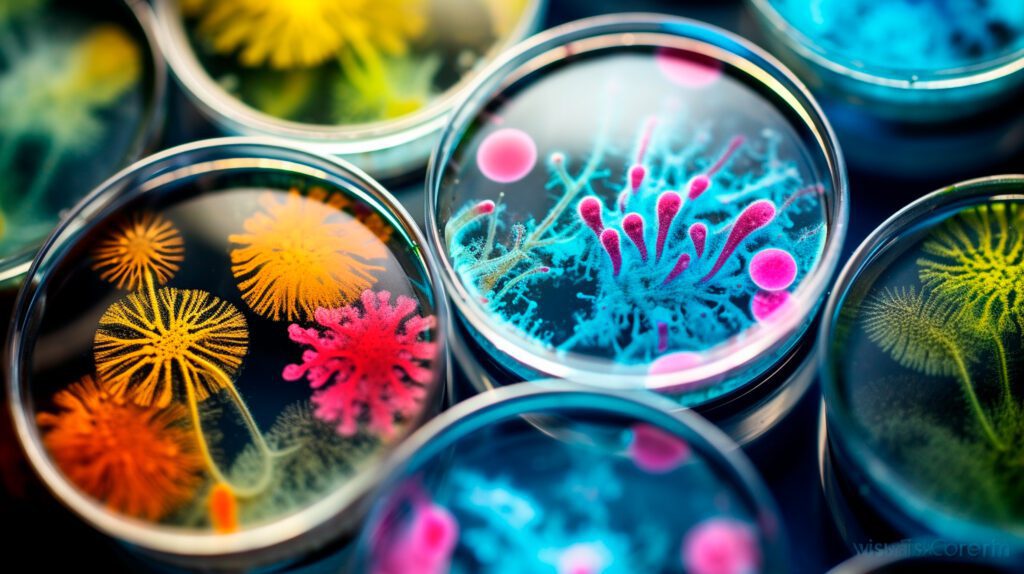צרו איתנו קשר!
מיקרואורגניזמים
Microorganisms
About The Course
על הקורס
למרות שבני האדם הם היצורים החיים הבולטים ביותר, המציאות מלמדת כי היצורים הנפוצים והשכיחים ביותר בעולם הם אלה הנסתרים מעין האדם – החיידקים והנגיפים. קורס זה יציע מבט מקיף ומעמיק על היבטים מרתקים במיקרוביולוגיה – תחום מפתח במדעי החיים.
תכני הלימוד יכללו:
• סקירת טקסונומיה של חיידקים ונגיפים: הצגת החלוקה לקבוצות שונות והמאפיינים הייחודיים של כל אחת.
• מיקרוביולוגיה יישומית: תפקיד החיידקים לטובת האדם ותרומתם לתעשיות שונות.
• מיקרואורגניזמים קומנסליים: היכרות עם החברים המיקרוביאליים החיים בגופנו – כמותם, מגוונם וחשיבותם.
• שיטות זיהוי חיידקים: טכניקות מעבדתיות לזיהוי וגילוי של חיידקים שונים.
• עקרונות קוך: הליך מדעי לקביעת קשר סיבתי בין פתוגן לבין מחלה ספציפית, לצורך טיפול יעיל.
• חיסון ומערכת החיסון: הבנת מנגנון פעולת החיסון ותפקיד מערכת החיסון בהגנה מפני זיהומים.
• נגיפים ומחלות זיהומיות: לימוד מנגנוני הפעולה של נגיפים ידועים כמו HIV ונגיף הרפס, והשלכותיהם הרפואיות.
• זואונוזות: מחלות הנגרמות על ידי מעבר של פתוגנים מבעלי חיים לאדם.
הקורס יחשוף את המשתתפים לעולם המופלא והמגוון של היצורים המיקרוסקופיים הנפוצים כל כך בסביבתנו. דרך למידה תיאורטית ומעשית, יוכלו הסטודנטים להעריך את החשיבות והתפקידים המרכזיים של מיקרואורגניזמים אלה במערכות ביולוגיות שונות.
מוזמנים להצטרף לעולם מסתורי, מגוון ומופלא הנמצא כמעט בכל מקום בעולמנו, שעליו ניתן לומר "מה קטנו מעשיך ה'" !
* הקורס יותאם לרמת כל שכבת גיל.
Despite humans being the most prominent living organisms, reality shows that the most common and abundant entities in the world are those hidden from the human eye – bacteria and viruses. This course offers a comprehensive and in-depth look at fascinating aspects of microbiology – a key field in life sciences.
The curriculum will include:
• Taxonomic overview of bacteria and viruses: Presenting the classification into different groups and the unique characteristics of each.
• Applied microbiology: The role of bacteria for human benefit and their contribution to various industries.
• Commensal microorganisms: Introduction to the microbial companions living in our bodies – their quantity, diversity, and importance.
• Bacterial identification methods: Laboratory techniques for identifying and detecting various bacteria.
• Koch's postulates: A scientific procedure for establishing a causal link between a pathogen and a specific disease, essential for effective treatment.
• Immunization and the immune system: Understanding the mechanism of immunization and the role of the immune system in protecting against infections.
• Viruses and infectious diseases: Studying the mechanisms of action of known viruses such as HIV and herpes virus, and their medical implications.
• Zoonoses: Diseases caused by the transmission of pathogens from animals to humans.
The course will expose participants to the wonderful and diverse world of microscopic organisms so prevalent in our environment. Through theoretical and practical learning, students will be able to appreciate the importance and central roles of these microorganisms in various biological systems.
You are invited to join a mysterious, diverse, and wonderful world that exists almost everywhere in our world, about which one can say, "How small are Your creations, O Lord!"
* The course material will be tailored to the age of the learners.







